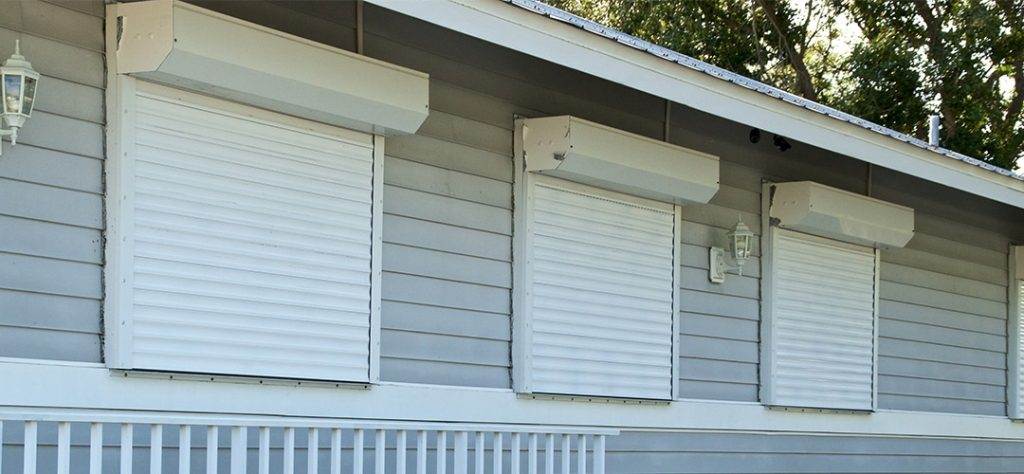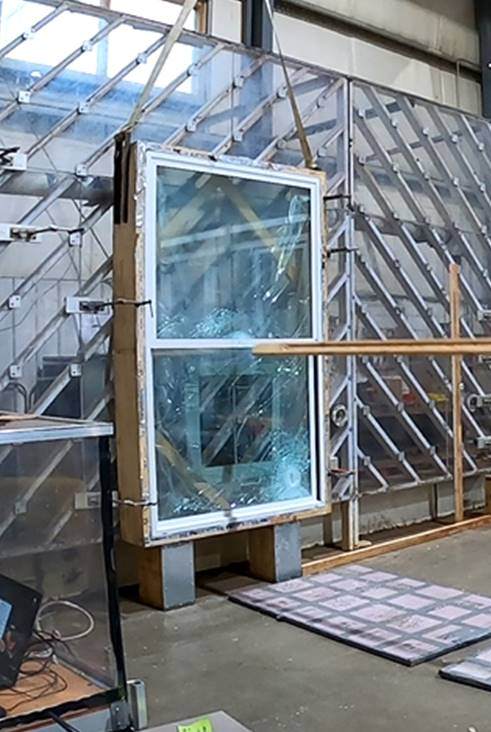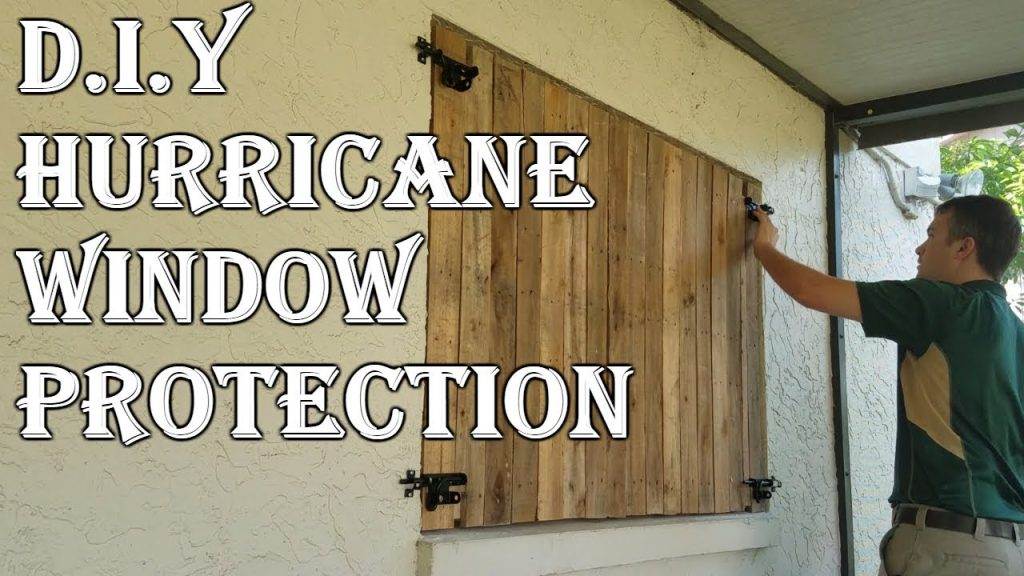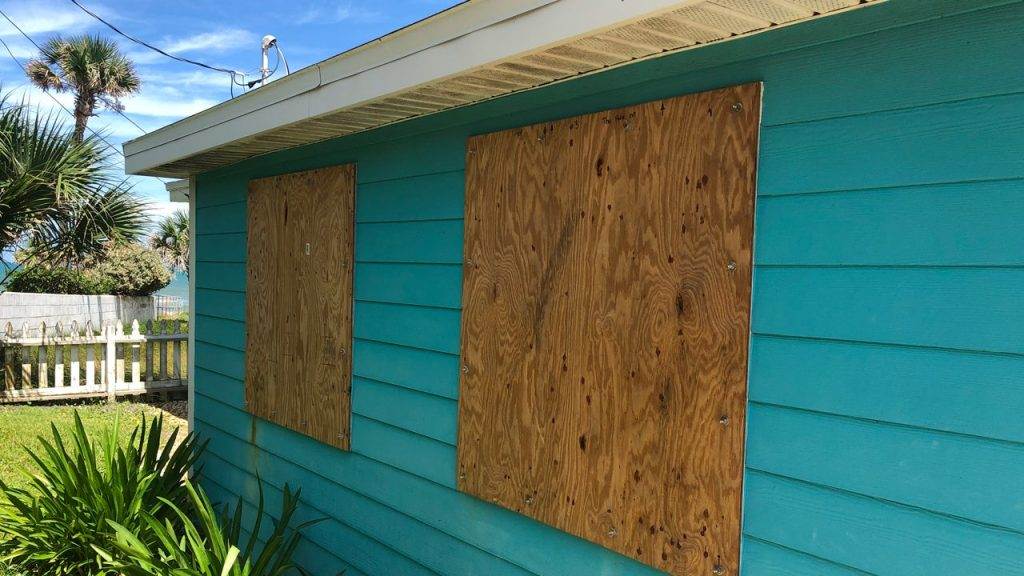When it comes to safeguarding our homes from the devastating force of a hurricane, one critical area that requires our attention is our windows. These fragile openings have the potential to not only let in fierce winds and rain but also become a dangerous breach in the structure, leading to further destruction. With countless options available in the market, from Impact-resistant glass to storm shutters, finding the best method to protect our windows can feel bewildering. In this article, we will explore various strategies and weigh their pros and cons, guiding you towards the safest and most effective ways to safeguard your windows during a hurricane.
Choosing the Right Window Materials
When it comes to protecting your windows from the destructive forces of a hurricane, choosing the right materials is crucial. There are several options available, each with its own advantages and considerations. Let’s explore some of the most popular choices:
Impact-Resistant Glass
Impact-resistant glass is specifically designed to withstand the impact of flying debris during a hurricane. It is made up of multiple layers of glass and a solid interlayer, such as polyvinyl butyral (PVB), which holds the glass together even if it shatters. This prevents shards of glass from causing injury or further damage.
There are two types of impact-resistant glass: laminated and tempered. Laminated glass is constructed by sandwiching the PVB interlayer between two layers of glass, providing enhanced strength and durability. Tempered glass, on the other hand, undergoes a heat treatment process that makes it stronger than regular glass. Both types offer excellent protection against hurricanes and are suitable for various window sizes.
The benefits of impact-resistant glass include improved security, reduced noise transmission, and increased energy efficiency. However, it is important to consider the cost. Impact-resistant glass tends to be more expensive than other options, but the long-term benefits and peace of mind it provides may outweigh the initial investment.
Plywood Panels
Plywood panels are a popular and affordable option for protecting windows during a hurricane. They are easy to install and can be customized to fit any window size. When properly installed, plywood panels can effectively shield windows from flying debris and high winds.
Choosing the right plywood is essential to ensure optimal protection. Look for exterior-grade plywood that is at least 0.75 inches thick. Thinner plywood may not provide adequate strength and may be more susceptible to damage. It is also important to measure and cut the plywood accurately to ensure a snug fit over the window.
Installation techniques vary, but in general, the plywood panels should be firmly secured to the window frame using screws or bolts. It is recommended to pre-drill holes in the plywood to prevent splitting and make installation easier. Remember to label each panel with the corresponding window for easy reinstallation in the future.
While plywood panels offer a cost-effective solution, it is important to note that they are not a long-term option. They require regular maintenance, such as sealing and painting, to prevent deterioration. Additionally, they block natural light and hinder visibility when they are in place.
Accordion Shutters
accordion shutters are a popular choice for homeowners seeking convenience and durability. These shutters consist of hinged horizontal slats that fold together accordion-style when not in use. They can be easily deployed and locked into place when a hurricane is approaching.
Accordion shutters are available in various materials, including aluminum, steel, and even polycarbonate. Aluminum shutters are a popular choice due to their lightweight nature and resistance to corrosion. Steel shutters offer increased strength and security but may require more maintenance. Polycarbonate shutters are less common but provide excellent impact resistance and UV protection.
One of the key advantages of accordion shutters is their ease of use. They can be quickly and easily operated by a single person, making them ideal for homeowners who may need to evacuate during a hurricane. Additionally, accordion shutters provide enhanced security and can help deter intruders even when there isn’t a storm.
When installing accordion shutters, it is essential to consider the size and weight of the shutters. They should be properly anchored to the window frame or adjacent wall to ensure stability. Professional installation is recommended to ensure proper alignment and functionality.
Roll-down Shutters
Roll-down shutters offer a sleek and convenient solution for hurricane protection. These shutters are housed in a compact box above the window and are operated using a motorized mechanism. With a push of a button, the shutters roll down to cover the window, providing a strong barrier against hurricane-force winds and debris.
Roll-down shutters come in different styles, including aluminum, steel, or polycarbonate slats. Aluminum shutters are popular due to their durability and resistance to corrosion. Steel shutters offer added strength and security but may require regular maintenance. Polycarbonate shutters provide impact resistance and UV protection, while still allowing some natural light to filter through.
One of the major benefits of roll-down shutters is their convenience. They can be operated with ease using a remote control or switch, eliminating the need for manual installation or storage. Additionally, roll-down shutters can be customized to fit any window size and can even be integrated into smart home systems for added convenience.
Professional installation is highly recommended for roll-down shutters, as it requires precise measurements and proper electrical connections. It is important to ensure that the shutters are securely attached to the window frame or adjacent wall to withstand the forces of a hurricane effectively.
Hurricane Film
Hurricane film, also known as window film or safety film, is a cost-effective option for protecting windows during a hurricane. It is a transparent and adhesive polyester film that is applied directly to the glass surface. When properly installed, hurricane film can reinforce the glass and prevent it from breaking into dangerous shards.
The installation process typically involves thoroughly cleaning the window, applying the film, and removing any air bubbles or wrinkles. Hurricane film can be transparent or tinted, offering additional benefits such as UV protection and increased privacy.
While hurricane film provides a layer of protection against flying debris, it is important to note that it is not as effective as other options, such as impact-resistant glass or shutters. It may not be able to withstand the full force of a hurricane and can still allow some damage to the glass. However, it can provide some level of protection on a budget, particularly in areas with less severe storm conditions.
Maintenance of hurricane film is relatively easy, requiring regular cleaning and inspection for any signs of damage or peeling. In the event of severe damage, the film can be easily removed and replaced. However, it is important to check the manufacturer’s instructions and warranty before attempting any repairs or replacements.
Window Frame and Anchor Bolts
To ensure proper installation and reinforcement of windows, it is important to consider the window frames and anchor bolts. The window frame provides structural support and stability, while the anchor bolts or screws secure the frame to the surrounding walls or structure.
For maximum strength and stability, the window frames should be made of durable materials, such as aluminum or steel. These materials are resistant to corrosion and can withstand the forces of a hurricane. Additionally, the frame should be securely anchored to the walls using anchor bolts or screws that penetrate deep into the adjacent structure.
The size and number of anchor bolts or screws will depend on the size and weight of the window. It is important to follow the manufacturer’s guidelines and local building codes to ensure proper installation. Professional assistance may be required to accurately determine the appropriate anchoring method and hardware.
Additional Reinforcement Bar
In addition to the window frame and anchor bolts, an additional reinforcement bar can be installed to provide extra support during a hurricane. This bar is typically made of sturdy metal, such as steel, and is placed horizontally across the window frame.
The reinforcement bar adds strength and rigidity to the window, preventing it from flexing or bowing under the pressure of strong winds. It can be particularly beneficial for large windows or windows located in areas prone to high wind speeds.
Installation of the reinforcement bar involves securely attaching it to the window frame using bolts or screws. It is important to ensure that the bar is properly aligned and parallel to the window frame to effectively distribute the forces during a hurricane.
Caulking and Weatherstripping
Proper sealing around windows is essential to prevent water infiltration and air leaks during a hurricane. Caulking and weatherstripping are simple yet effective techniques to create a watertight and airtight seal.
Caulking is the process of sealing gaps and joints around the window frame using a waterproof sealant. Silicone-based caulks are commonly used due to their flexibility and resistance to water damage. Weatherstripping, on the other hand, involves applying a strip of material, such as rubber or foam, along the edges of the window frame to create a tight seal when the window is closed.
Regular inspection and maintenance of caulking and weatherstripping are necessary to ensure their effectiveness. Over time, these materials can deteriorate or become damaged, compromising the integrity of the seal. Reapplying caulk or replacing weatherstripping as needed will help maintain a secure and energy-efficient window.
Window Clips or Storm Bars
Window clips or storm bars are additional devices that can be used to reinforce windows during a hurricane. These devices are installed on the exterior of the window and provide an extra layer of support against strong winds.
Window clips are typically made of sturdy metal or plastic and are attached to the window frame and adjacent structure. They help secure the window and prevent it from being forced open or blown in by the wind. Storm bars, on the other hand, are horizontal bars that are placed across the window frame and securely attached to the surrounding walls.
The installation process for window clips and storm bars will vary depending on the specific product and window type. It is important to carefully follow the manufacturer’s instructions and ensure that the devices are properly secured to provide effective reinforcement.
Window Insurance
While protecting your windows from a hurricane is crucial, it is also important to have insurance coverage to help mitigate potential damage or losses. Window insurance, also known as hurricane or windstorm insurance, provides financial protection in the event of window damage caused by hurricanes or strong winds.
Window insurance typically covers the cost of repair or replacement of damaged windows, as well as any resulting water damage or losses. It may also provide coverage for additional expenses, such as temporary repairs or alternative living arrangements if your home becomes uninhabitable.
Before selecting window insurance, it is important to carefully review the policy terms, coverage limits, and exclusions. Be sure to understand the deductible amount and any specific requirements for filing a claim. It is also advisable to regularly review and update your policy to ensure adequate coverage based on your specific needs and location.

This image is property of www.houselogic.com.
Preparing the Surrounding Area
Protecting your windows during a hurricane involves more than just reinforcing the windows themselves. Taking proactive measures to prepare the surrounding area can help minimize potential damage and improve overall safety. Here are some steps to consider:
Landscaping
Trimming and maintaining your landscaping can help reduce the risk of damage to your windows during a hurricane. Overgrown trees or branches can become hazardous projectiles in strong winds, potentially causing significant damage to windows or other structures.
Regularly inspect your yard for any dead or weak branches that may need to be removed. Trim trees and shrubs to ensure they are a safe distance away from your windows. If any trees pose a significant risk, it may be advisable to consult with a professional arborist for guidance on pruning or removal.
Additionally, consider planting native or wind-resistant plants in your yard. These plants are better equipped to withstand high winds and are less likely to pose a threat to your windows or home.
Secure Loose Objects
Take the time to secure or remove any loose objects in your yard that could become projectiles during a hurricane. Patio furniture, potted plants, BBQ grills, and children’s toys should be properly stored or secured to prevent them from being tossed around by strong winds.
Consider anchoring larger objects, such as sheds or play structures, to the ground using straps or anchor bolts. This will help ensure that they remain in place during a storm and do not cause damage to your windows or other structures.
Trim Trees and Branches
It is important to regularly inspect and trim trees and branches around your property to reduce the risk of damage during a hurricane. Weak or overgrown branches can easily break off and cause significant damage to windows, roofs, or vehicles.
If you are unsure about the condition of your trees or the proper pruning techniques, it may be best to hire a professional tree service. They can assess the health of your trees and perform any necessary trimming or removal to minimize the risk during a storm. Be sure to schedule this service well in advance of hurricane season, as tree services tend to get busy during storm preparation periods.
Keep Gutters and Drains Clean
Maintaining clean and clear gutters and drains is essential to prevent water buildup and potential damage during a hurricane. Clogged gutters can cause water to overflow and seep into your home, potentially damaging walls, ceilings, and windows.
Regularly inspect and clean your gutters to remove any debris, such as leaves or twigs. Consider installing gutter guards or leaf screens to prevent debris from accumulating in the first place.
Additionally, ensure that your yard’s drainage system is working properly. Clear any obstructions from drains and ensure that water can flow freely away from your home’s foundation. This will help prevent water from pooling near your windows and potentially causing water damage or flooding.
Protecting Nearby Structures
While focusing on protecting your windows, it is also important to consider nearby structures that may pose a risk during a hurricane. Buildings, fences, or walls adjacent to your windows should be inspected for stability and reinforced if necessary.
Prioritize reinforcing any weak or damaged structures that could potentially collapse and cause damage to your windows. Consult with a professional contractor or engineer if you have concerns about the structural integrity of neighboring buildings or walls.

This image is property of www.wikihow.com.
Proactive Prevention Measures
In addition to the various protection methods discussed above, taking proactive measures to prepare for hurricanes can significantly reduce the risk of window damage. Here are some preventive measures to consider:
Regular Window Maintenance
Regular window maintenance is essential to ensure their optimal performance and longevity. Inspect your windows at least once a year for any signs of damage, such as cracks, leaks, or deteriorating seals. Replace any damaged or worn components promptly to prevent further deterioration.
Clean your windows regularly, both inside and out, to remove dirt, dust, and other debris. This will not only keep your windows looking their best but also ensure that they operate smoothly. Pay attention to the window tracks and hardware, lubricating them as necessary to prevent sticking or rusting.
Storm Shutters
Installing storm shutters is an effective way to protect your windows from hurricane-related damage. As discussed earlier, there are various types of shutters available, each with its own advantages and considerations.
Consider investing in storm shutters that are easily deployable and provide effective protection. Accordion shutters and roll-down shutters are popular choices due to their convenience and durability. They can be quickly closed and locked into place when a hurricane is imminent, providing a strong barrier against high winds and flying debris.
Window Tinting
Window tinting is another preventive measure that can help protect your windows from the harmful effects of a hurricane. Tinted windows are treated with a thin film that blocks a significant amount of UV rays and solar heat.
In addition to reducing the risk of fading and sun damage to your interior furnishings, window tinting can also provide added strength and shatter resistance to the glass. Although it may not be as effective as impact-resistant glass or shutters, window tinting can help reduce the likelihood of glass shattering during a storm.
Consult with a professional window tinting company to determine the best type and level of tint for your specific needs. Be sure to choose a reputable company that offers high-quality products and installation services.
Storm Panels
Storm panels are removable panels that are installed over windows to provide protection during a hurricane. They are typically made of sturdy materials, such as aluminum, steel, or polycarbonate, and are designed to withstand the impact of flying debris.
There are different types of storm panels available, including corrugated panels, clear panels, and fabric panels. Corrugated panels offer excellent strength and durability but can obstruct visibility. Clear panels, made of strong polycarbonate, provide protection while allowing natural light to pass through. Fabric panels are lightweight and easy to store but may not provide as much impact resistance as other options.
When installing storm panels, it is important to follow the manufacturer’s instructions and properly secure them to the window frame. Panels should be securely fastened using clips, tracks, or other attachment methods to ensure they stay in place during a storm. Regular inspection and maintenance are necessary to check for any signs of damage or deterioration.
Hurricane Fabric
Hurricane fabric, also known as storm fabric or wind-abatement screens, is a flexible and lightweight option for window protection. It is made of high-strength materials, such as PVC-coated polyester, and is specifically designed to withstand hurricane-force winds and flying debris.
During a hurricane, hurricane fabric is attached to hooks or tracks around the window using tensioning straps or cords. The fabric creates a strong barrier that dissipates the forces of the wind and prevents debris from impacting the window.
One of the major advantages of hurricane fabric is its ease of installation and storage. It can be quickly deployed when a storm is approaching and easily removed and folded away afterward. Additionally, hurricane fabric allows natural light to filter through, maintains visibility, and can be customized to fit any window size or shape.
Regular inspection and maintenance of hurricane fabric are necessary to ensure its integrity and effectiveness. Look for any signs of wear or damage, such as tears or fraying, and replace the fabric as needed. Proper storage is also important to prevent degradation from UV exposure and moisture.
Now that you have a comprehensive understanding of the different window protection methods, you can make an informed decision based on your specific needs and budget. Remember, each option has its own advantages and considerations, so it is important to carefully evaluate the pros and cons of each before making a final choice. By taking proactive measures to protect your windows and preparing your surrounding area, you can minimize potential damage and increase the safety and resilience of your home during hurricane season.

This image is property of www.defenselite.com.










